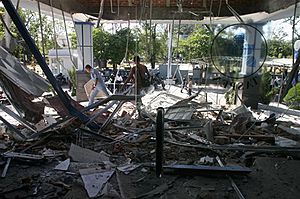 US - The United States Geological Survey (USGS) linked 114 remote earthquakes to the magnitude 8.6 East Indian Ocean quake that occurred April 11, 2012.
US - The United States Geological Survey (USGS) linked 114 remote earthquakes to the magnitude 8.6 East Indian Ocean quake that occurred April 11, 2012.
USGS seismologist Fred Pollitz and colleagues published their findings Sept. 26, 2012 in "Nature."
The study focused on global seismic activity triggered by the East Indian Ocean quake, according to a USGS press release.
The scientists found that the magnitude 8.6 earthquake triggered 114 earthquakes that were a magnitude 4.5 or greater in the six days following the quake.
As a result of the findings, the team is redefining the definition of an aftershock. Currently, the term aftershock refers to earthquakes that happen after and nearby the main fault rupture. The new definition will consider aftershocks to be earthquakes of any size and location that would not have taken place had the main shock not struck.
The difference in the two definitions is that an earthquake thousands of miles away can now be called an aftershock of the first earthquake if the seismic activity of the first quake can be determined to have caused the later quake.
After studying the seismic activity after the East Indian Ocean quake, the scientists determined that large earthquakes as far away as Mexico and Japan, in the following days, were actually aftershocks.
The East Indian Ocean was the largest, by a factor of 10, strike-slip earthquake ever recorded. A strike-slip earthquake is caused by two sections of tectonic plates sliding along each other horizontally with very little vertical movement.
"No other recorded earthquake triggered as many large earthquakes elsewhere around the world as this one," said Pollitz.
source: http://www.accuweather.com

